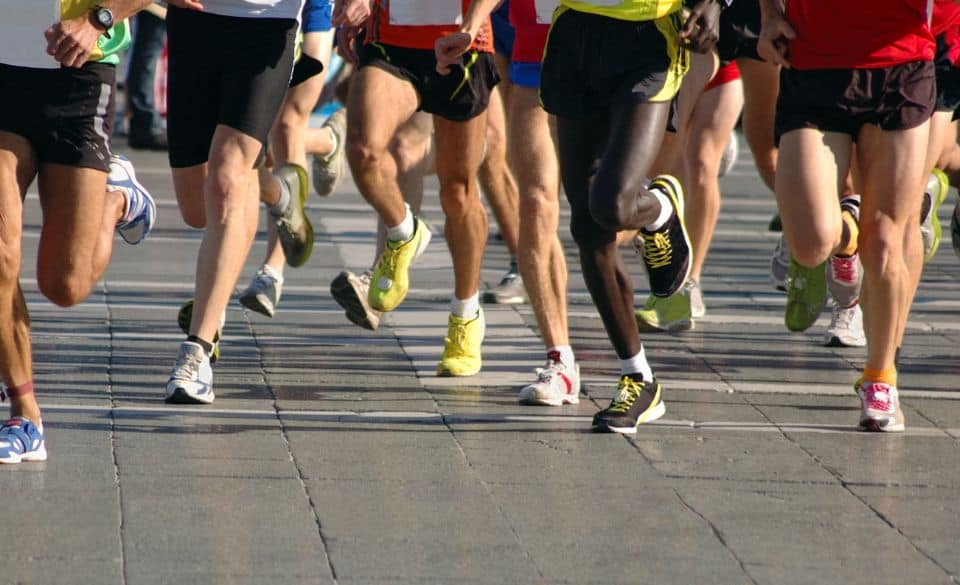
Best Running Technique For Marathon
Page Contents
Running is a great form of exercise and has become increasingly popular as more people look to get active and stay in shape. Marathon running requires a different approach to technique and training than other forms of exercise. Here are some tips to help you become the best marathon runner you can be!
The key to becoming a successful marathon runner is to focus on proper form and technique. Many runners think that increasing their speed is the most important factor when it comes to marathon running. However, this is not the case. Speed is important, but it is not the only factor that plays a role in successful marathon running. Other elements such as stride length, frequency, body position, running posture, and arm mechanics all have to be considered when trying to maximize marathon performance.
The first step to developing the best marathon technique is to focus on your footstrike. When running a marathon, it’s important to land with a mid-foot strike, rather than your heel. This helps to create a more efficient stride, allowing you to conserve energy and reduce the amount of impact on your body.
When it comes to stride length and frequency it is important to create a balance. Your stride should be long, but not too long as this will create more energy expenditure and can result in increased fatigue. Keeping a consistent cadence and frequency will help you to remain consistent over the duration of the marathon and help you to maintain your energy levels.
Along with your stride and footstrike, it is also important to pay attention to your body position. While running it is important to stay upright. Leaning too far forward will reduce your efficiency and increase the impact when you land. Additionally, your arms should be kept close to your waist, with your elbows bent at a 90-degree angle and your arms driving back and forth in a straight line.
Finally, your running posture is critical to a successful marathon performance. Keeping your head and chest up will help to increase your lung capacity. Additionally, keeping your shoulders relaxed and low will help you to stay injury-free.
Developing these techniques and following these tips will help you to become the best marathon runner you can be. Consistency and form are two of the most important aspects to marathon running and by following these tips you will be well on your way to reaching your marathon goals.
How To Improve Your Running Technique Leading Up To A Marathon
Are you a runner looking to take your marathon performance to the next level? You know that the running technique you use can make all the difference between success and failure and can even improve your overall health and fitness. In this article, we’ll take a look at some of the best ways to improve your running technique leading up to a marathon.
The very first step to improving your running technique leading up to a marathon is to think about your posture when running. A good posture is essential to not only good technique but also to prevent injury. Think about lengthening through the spine and drawing your shoulders back and down. Making sure your chin is slightly tucked in allows you to open up your lungs which will, in turn, improve your breathing.
Next, focus on your arms. Your arms should be low and loose and should follow the motion of your legs. You don’t want to hold them rigidly or bring them up too high as this will interfere with your stride. Allow your arms to swing naturally as you run, using them to propel you forward.
It is also important to pay attention to your stride. Keep your strides long, but not too much so that you’re overstriding. Overstriding is when your foot lands in front of your body, causing a braking force. This can be inefficient as it will slow you down and decrease your power output. Instead, aim for shorter, quicker and smoother strides.
Finally, pay attention to your feet. When running, land evenly on the outside and inside of your feet. Try to avoid excessive heel striking (landing on the heel first) which can place repetitive stress on your joints, tendons and muscles. Aim to land softly on the center of your foot and then roll your foot outwards and forwards until your toes are pushing off.
By following all of these steps, you should be able to improve your running technique ahead of your next marathon. An improved technique can help you to run more efficiently and effectively as well as reducing any associated pain or injury. Work on these techniques in the weeks and months prior to your race and you will be on the path to success.
Add Running Drills Into Your Training
Running drills are an essential part of any runner’s training routine. Running drills can increase speed, improve endurance, and most importantly, enhance technique. Whether you’re a novice or a veteran, incorporating these running drills into your program is key to taking your running to the next level.
High Knees:
High knees are one of the most classic running drills. The goal of high knees is to encourage a higher cadence, a faster turnover and to drive your knee up with each stride. To do this drill, start by standing in place and bringing the right knee up as high as you can while keeping your torso relatively still. Quickly switch to bring the left knee up and alternate between legs. You should feel a slight bounce with each rep. Continue for 1-2 minutes.
Butt Kicks:
Butt kicks are a variation of high knees and also focus on increasing your speed and turnover. To do this drill, start in a standing position and alternate between bringing your heels up to your glutes. Kick your feet back as quickly and as far as you can with each rep. Once again, you should feel a slight bounce with each kick. Continue for 1-2 minutes.
Lateral Hops:
Lateral hops are a great way to work on your agility, coordination, balance and stability. To do this drill, start at one corner of a square, box or other marked area. Plant your dominant foot and then quickly hop to the next corner and repeat. Alternating leading legs will help ensure balanced development. These hops should be as quick and powerful as possible while maintaining a low, stable center of gravity. Continue hopping sideways until you reach the original corner and rest.
Bounding:
Bounding drills are an excellent way to increase your running speed and explosiveness. To do this drill, start by running at a comfortable pace. Then, once your stride gets going, focus on pushing off with the trailing leg and drive your leg up and forward. This should be done for 10-15 seconds and then you should return to a comfortable pace. This will help emphasize proper running technique and help you build speed.
Carioca:
Carioca is another drill that helps increase agility and coordination. To do this drill, start by stepping from side to side with the same foot first. The key to this drill is to keep your feet together and don’t let them get too far apart. You should also focus on staying low and keeping the feet crab-like rather than bringing them in front. Do this for 20-30 yards and then repeat in the opposite direction.
Skips:
Most runners reach a point in their training where they need to start challenging themselves more. Skipping is a great way to introduce more intensity without a great deal of risk. To do this drill, begin by skipping forward with a quick lift of the knee and a forceful thrust of the foot. Drive your hands towards your chest in a forward motion. This will help generate more power. As you skip forward, stay on the balls of your feet and pull your arms back as you prepare for your next skip. Continue for 1-2 minutes and then rest.
Running drills are a great way to build strength and refine technique. They also help break up the monotony of longer training runs and give your legs a different sensation than regular running. Start by incorporating a few of the drills above into your routine and make sure to vary your intensity, rest times and distances. Before you know it, you’ll be running further and faster than ever before!


